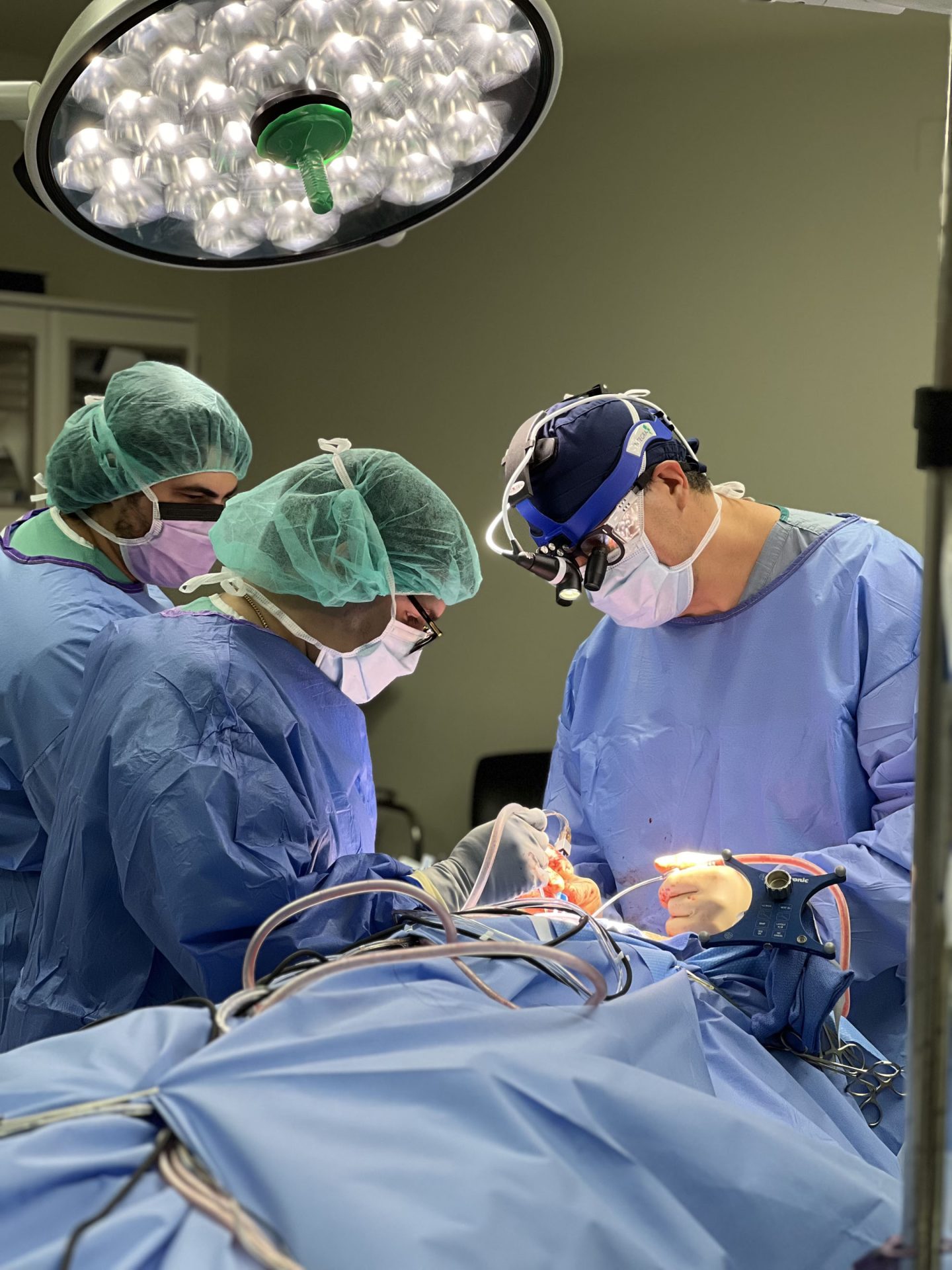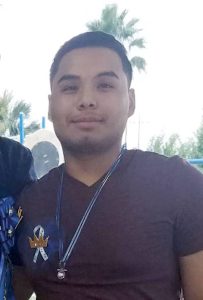|
Only have a minute? Listen instead
Getting your Trinity Audio player ready...
|

Although the sensation was terrifying, 15-year-old Dante Enriquez didn’t know at the time that what was happening to him was not normal.
“I didn’t tell my family about it just because I thought maybe it was something normal going on in my body,” Enriquez said.
Now 24, the McAllen resident is aware that what he was feeling wasn’t supposed to be happening at all.
“It starts off with auras, you know, like smells. I would get really bad deja vu just like I’m reliving the moment, and I would get a really bad feeling in my chest like a feeling of fear. To the point where sometimes I would want to cry,” Enriquez said, adding that each seizure caused by his epilepsy would last about 30 seconds.
He explained that during his epileptic episodes the sensation of fear was so strong he would sometimes reach out to his mom and co-workers for a hug.
“I just couldn’t control it, but thank God I did get through those 30 seconds,” Enriquez said.
He struggled with epilepsy since he was 15 years old and over the course of about nine years, his seizures were very frequent.
Epilepsy is a disease that causes abnormal electrical activity in the brain, and can be genetic, idiopathic, a secondary effect due to a brain tumor, stroke or another otology in the brain.
“From 15 years old to I like to say 22 years old, it was pretty much every day,” Enriquez said.
While he was grateful that he remained conscious during a majority of his seizures, he recalled two occasions — once in 2018 and another in 2019 — when his seizures escalated, causing him to convulse and vomit.
The seizures he had regularly were different in the sense that they would affect his memory. In fact, Enriquez said he had memory tests conducted by a specialist that determined each seizure was affecting his memory.
When he was 21 years old, he met with Dr. Leonel Estofan, a neurologist at DHR Health, who diagnosed him with temporal lobe epilepsy.
“It’s something that is not pretty common but it’s out there for epileptologists like me. We see it a lot,” Estofan, who moved to the Rio Grande Valley from Ohio in 2021, said Wednesday. “The temporal lobe is a part of the brain that sometimes will produce abnormal electrical activity.”
He explained that about 70% of people with epilepsy respond to one medication that is able to control the seizures.
However, there are about 30% of cases, like Enriquez, whose epilepsy is classified as refractory or nonresponsive to pharmaceutical treatment.
“The type of seizures that Dante had was a seizure that didn’t respond to six different medications,” Estofan said.
Dr. Juan Torres-Reveron, a neurosurgeon at DHR Health, said that provides little chance for relief.
“Once you cross two medications and you continue having seizures, the probability of you having seizure control with additional medications goes down to almost zero,” Torres-Reveron said Wednesday. “The moment they fail two medications, meaning they continue to have seizures even though they have tried two separate medications, they are what are called candidates for epilepsy surgery evaluation.”
Estofan then took Enriquez to the Comprehensive Epilepsy Center at DHR Health in Edinburg, where he conducted various tests including an MRI, PetScan, Electroencephalogram (EEG) and other neuro tests.

A team of four medical experts — Estofan, Torres-Reveron, a neuropsychologist and a radiologist — then worked together to localize where the seizures were stemming from.
Torres-Reveron explained that the surgeon who performs the procedure, a right temporal lobectomy, removes the affected area of the brain to relieve the seizures.
The procedure itself is a delicate undertaking but also among the most common to treat adults.
Another patient has already received the procedure who was suffering with constant seizures, which Torres-Reveron referred to a state called status epilepticus.
He was taken into surgery immediately in which they conducted a similar surgery.
Torres-Reveron explained that the structure and shape of the amygdala and hippocampus, which are located in the temporal lobe, tend to propagate seizures and “once they get involved they seem to continue … reverberating,” which is why epilepsy is commonly located in the temporal lobe.
Estofan compared the effects on the brain to a person constantly sticking their finger in an electrical socket, and getting burned when it’s taken out.
“The same happens to the brain, (where) every time it has a seizure the brain burns and the brain cells are burned and the memory,” he said, adding that untreated epilepsy can lead to early onset memory loss.
This is why a specialized team which can treat these various cases and provide the necessary evaluations is important to the process, given that general neurology may not be able to manage certain types of seizures.
Another danger could be misdiagnoses occurring due to subtle differences in cases, which can easily be confused with other neurological disorders or conditions.
Estofan explained that even though some seizures do not cause convulsions it does not mean that its effects are less dangerous.
Every seizure causes damage to the brain.
“When I arrived in 2021, there were many patients with their memory affected and they were misdiagnosed because seizures are not just one thing, it can be many things and could mimic psychological problems,” Estofan said.
It’s good to have epilepsy care in any part of the country, Estofan added, noting that DHR Health is among the 15 centers in the U.S. which can perform epilepsy surgery.
“That surgery usually is high(ly) complex that needs … a multidisciplinary team that we have down here for the first time in the history of the Valley,” Estofan said.
Whether the Valley suffers less or more than other parts of the country is not at issue, but rather the availability of care locally, making DHR’s ability to treat in this capacity a critical component of care here, Torres-Reveron explained.
“I think the patients are there. Many of them have been treated but probably not evaluated properly.” Torres-Reveron said. “The prevalence itself is probably the same as anywhere else in the United States; it’s just that the care was not in this area.”
He also explained that patients previously would have to travel to cities such as San Antonio, Houston, Austin or Galveston for the kind of treatment that DHR now provides in the Valley.
“We’re in the process of obtaining additional hardware, actually machinery, where we’re going to be offering the whole spectrum of epilepsy care,” Torres-Reveron said.
For Enriquez, having a facility that could treat his epilepsy so close to home made it easier for him to receive the necessary care.
“I’m glad that I was able to get this surgery from (Dr. Torres-Reveron) and it was all here at DHR, and I didn’t have to travel anywhere else and spend money that sincerely we didn’t have,” Enriquez said.
Now nearly two months after his surgery, Enriquez said that he hasn’t experienced another seizure since.
He’s come a long way from feeling like a burden to his family, who would have to drive him everywhere, to returning to work in September and beginning to drive himself around.
“I do feel better; I do feel happier,” Enriquez said.



